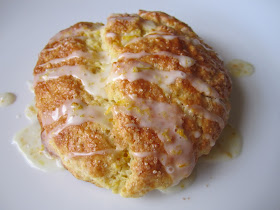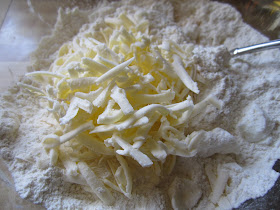"Seize the moment. Remember all those women on the Titanic who waved off the dessert cart."
~Erma Bombeck
Confession: I am guilty of blog-neglect. It's been three weeks since my last post. In my defense, it is the height of garden-prep time in New England, so something had to give.
 |
| Doesn't look like much NOW....but stay tuned... |
Beginning of September, as summer was having it's last gasp, I made this and it was so good, I wanted to post it, but did not get a good picture. Since then I've been dying for more and Easter was a great excuse to make it, seeing I had dessert duty.
This Lemon Mousse is just luscious and was big hit. The perfect accent to a light spring meal. I prefer it slightly tart, but you can adjust the lemon to your liking. Also, if you're squeamish about the uncooked egg whites, you can actually leave them out, using only the whipped cream (in this case, increase cream to 2 cups). It won't come out as cloud-like light, but it will still be fluffy and delicious.
 |
| light as a cloud |
As an added bonus, it keeps well for up to four days which is quite handy around busy holidays.
Lemon Mousse
2 whole eggs
4 eggs, separated
1 cup sugar
1 1/2 tablespoons lemon zest
1 cup freshly squeezed lemon juice (I got this from 4 lemons)
1/4 teaspoon salt
2 teaspoons Knox gelatin powder (1/2 packet)
1 1/2 cups whipping cream
1/4 cup confectioner's sugar
-----------------------
1 cup whipping cream
1/4 cup confectioner's sugar
1/2 teaspoon pure vanilla extract
In a large glass or metal bowl, mix together the 2 whole eggs, 4 egg yolks (save 2 of the whites in a separate bowl), sugar, lemon zest, lemon juice, Knox and salt. Place the bowl over a pot with a couple inches of boiling water in it. Keep the water at a boil, but do not let the bottom of the bowl touch the water. Stir constantly until mixture starts to thicken (takes approx. 15 minutes).
Set aside to cool. At this step, what you've got is lemon curd. It could be used between cake layers, on scones, biscuits or as a pudding. Cover with plastic wrap placed directly on the pudding, so it doesn't form a skin. Refrigerate 2 hours or until completely cooled.
In a medium bowl, whip the egg whites until stiff. Fold into cooled lemon curd. In a medium bowl, whip the 1 1/2 cups of cream with 1/4 cup confectioner's sugar until you get stiff peaks. Fold cream into the lemon mixture. Now spoon into a soufflé dish, or individual glasses. Serve cold with sweetened whipped cream (last 3 ingredients whipped together). Serves 8. It will keep for 4 days in the refrigerator, but if you store it, be sure to wait to decorate it with whipped cream until close to serving time.
















